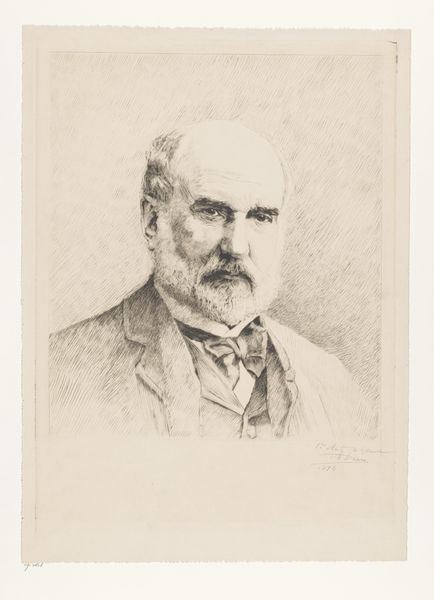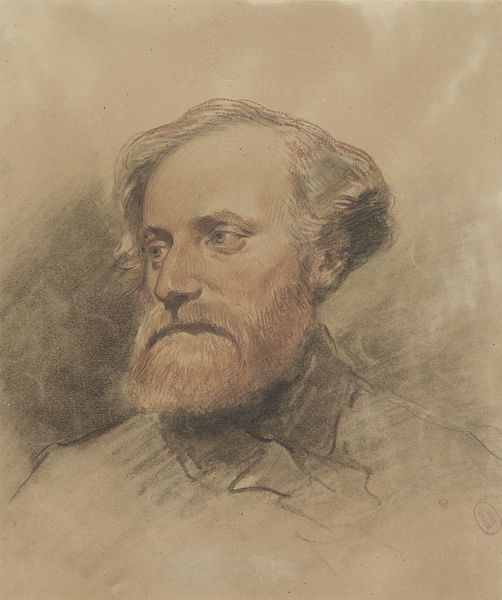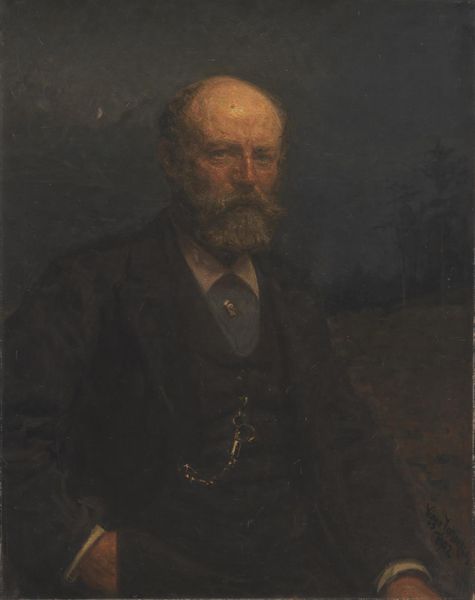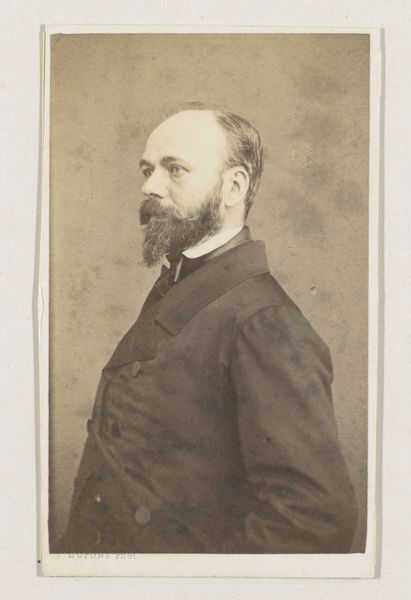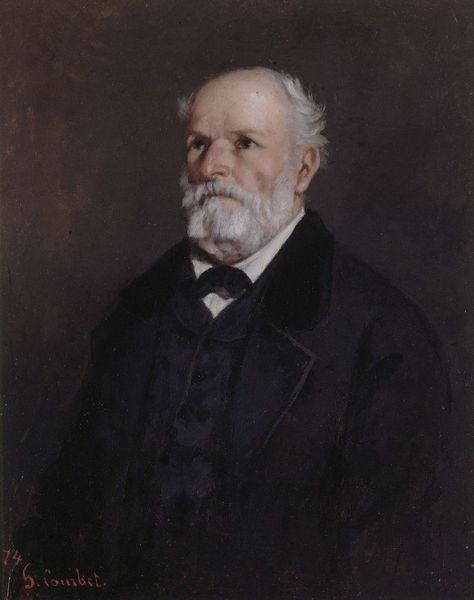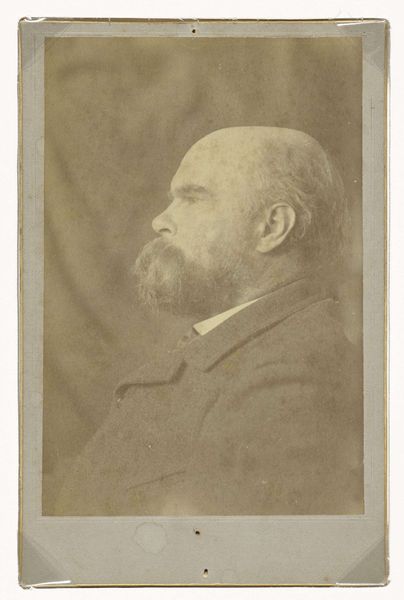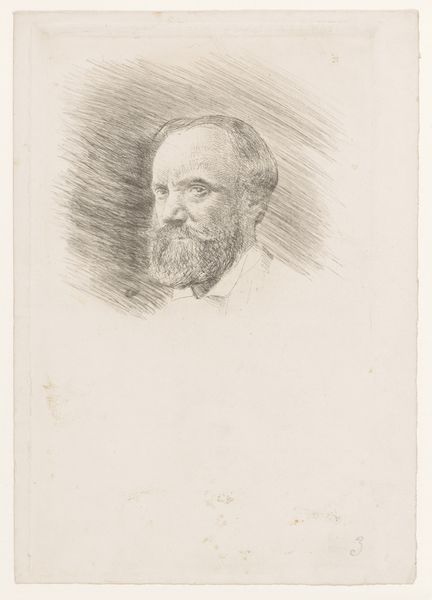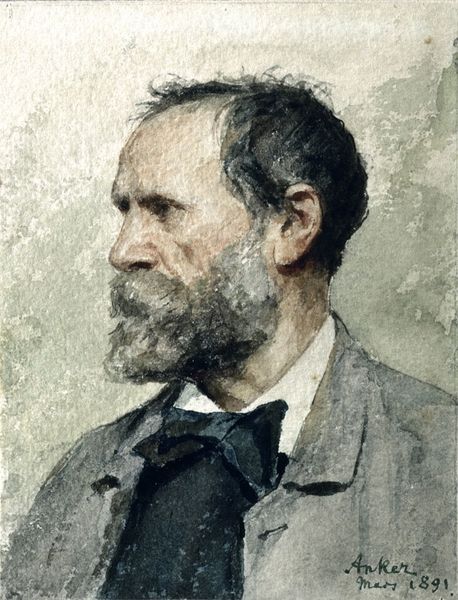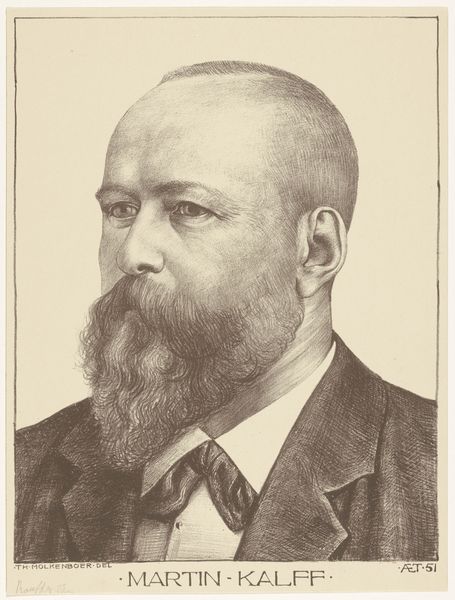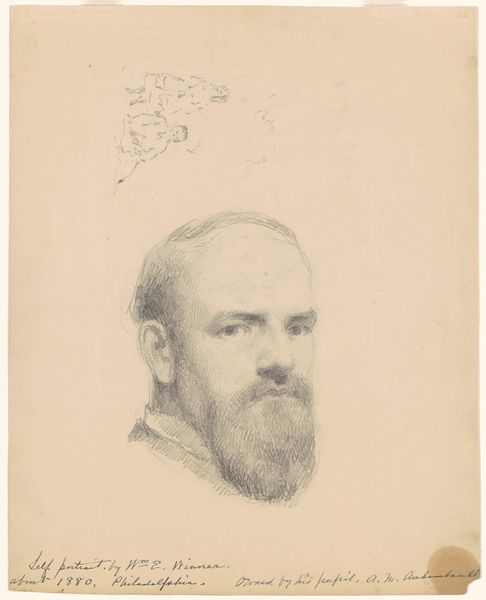
Copyright: Public domain
Editor: Here we have Eugène Burnand's "Self Portrait" from 1915, rendered in charcoal, pastel, and colored pencil. There's a striking formality to it, yet it feels very intimate because it's a self-portrait. What stands out to you most about this piece? Curator: The interesting thing about self-portraits, particularly from this era, is understanding their purpose within the artist’s career and the broader art market. Burnand created this drawing towards the end of his life, during the First World War. Given the devastation occurring around him, how might self-representation, and the artist's continued relevance, play into his intentions? Editor: That's a fascinating point. It wasn't just about capturing a likeness, but about asserting his presence, almost defying the chaos of the time. Curator: Precisely. Artists were not isolated; they navigated political landscapes, exhibition spaces, and critical receptions. Consider how this drawing, created using readily available materials like pastel and pencil, speaks to resourcefulness and accessibility during wartime, influencing its display and intended audience. Was it for private contemplation or public consumption? Editor: It does make me wonder about the original context – where this was first shown, how it was received... Perhaps that would change my interpretation of its purpose today. Curator: Context shifts everything. What seems like a straightforward self-portrait becomes layered with socio-political implications when viewed through the lens of its time and potential influence within Burnand’s legacy. Editor: This has completely changed how I see the work. Thank you for helping me consider these other contexts! Curator: My pleasure. Art always speaks volumes when we listen with informed ears.
Comments
No comments
Be the first to comment and join the conversation on the ultimate creative platform.
